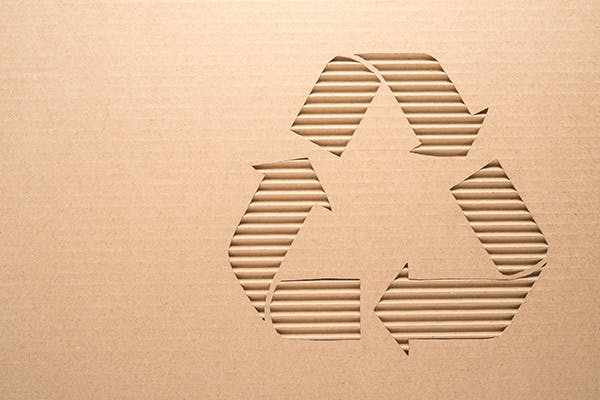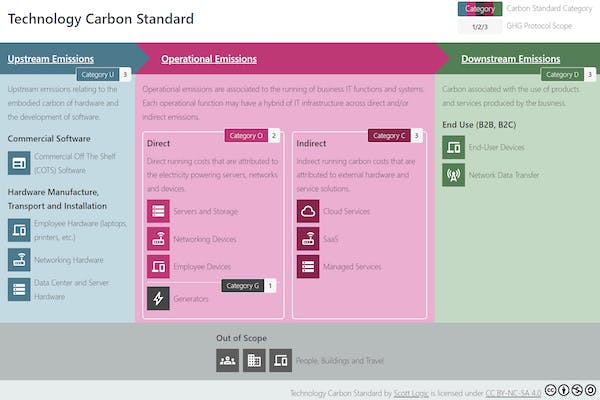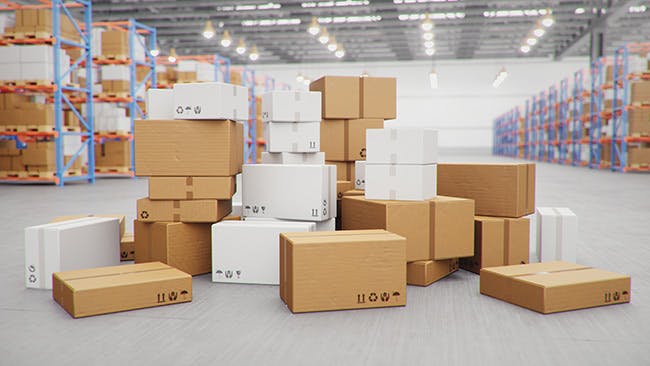
DS Smith: Setting a standard for technology sustainability
DS Smith is a leading provider of sustainable packaging solutions, paper products and recycling services worldwide. The company operates in more than 30 different countries, employing around 30,000 people. Through its Now & Next Sustainability Strategy, DS Smith is taking action to transition to a low-carbon, circular economy. The company has been on this transitional journey for over a decade. A significant part of this journey involves aligning DS Smith’s IT strategy with its wider sustainability strategy.
To this end, DS Smith engaged Konvergent – a leading Architecture and Strategy consulting company – to lead a programme of application modernisation across the company’s global operations. As a key input into this programme, DS Smith sought a framework by which it could measure the carbon footprint of its deployed IT assets, enabling the company to make data-driven decisions to improve its technology sustainability. With our growing reputation for pioneering work in this area, DS Smith and Konvergent engaged Scott Logic to deliver this framework, along with recommendations for next steps.
Through a focused and time-boxed project, our small team set about the rapid delivery of a pragmatic framework that would allow DS Smith to be self-sufficient in mapping, measuring and mitigating its technology carbon emissions.

Thanks to Scott Logic, we have clear visibility of our technology carbon footprint. The data model developed by Scott Logic has given us exactly what we were after – a shared language of IT sustainability across DS Smith and the means to measure our deployed IT assets. This gives us the ability to better plan how we reduce our footprint and reach our Now & Next sustainability goal of Net Zero greenhouse gas emissions by 2050.
Jeremy Axe, Group CTO, DS Smith
Mapping the lie of the land
We began with a discovery phase of discussions with key stakeholders in DS Smith’s technology, sustainability and facilities teams. These interviews covered four main areas. The first was to give us an understanding of the company’s global technology landscape and the range of technology assets that should fall within the scope of the measurement framework.
Next, we gathered information to discern the current picture of how these assets were managed and the units of measurement used to track their emissions. Then, we enquired about existing initiatives and technology projects, and their impact on the company’s technology sustainability.

Finally, we asked the stakeholders for their insights on how the company’s technology asset management and carbon emission measurement could be improved.
To the qualitative insights gained from these discussions, we added quantitative data from DS Smith’s Configuration Management Databases – its inventory of hardware, software and networks, and their interconnections. For each category of asset, we captured data on energy consumption, energy efficiency, and carbon emissions. This combination of qualitative and quantitative data provided a solid basis for a data model.
However, the picture was incomplete, as it would be for any organisation; trade-offs are inevitable, because of the time, cost and effort that would be involved in measuring everything accurately. As such, we filled the gaps in the model using a combination of heuristics (taking estimated values and applying broad estimation models based on global averages) and proxies (taking more accurate data points and applying broad estimation models based on industry averages).
Setting a standard for technology sustainability
One of DS Smith’s project objectives was to define a shared language of technology sustainability across the company. We accordingly applied our proposed Technology Carbon Standard as the organising principle of DS Smith’s emerging data model. This provided a clear distinction between in-scope Upstream, Operational and Downstream technology emissions, and out-of-scope emissions from people, buildings and travel.

Through the application of our standard, the data model organised DS Smith’s technology estate into categories analogous to Greenhouse Gas (GHG) Protocol scopes. In this way, DS Smith’s technology practitioners would be able to identify the most carbon-intensive areas to prioritise for impact reduction.
The intention of our proposed Technology Carbon Standard is exactly congruous with DS Smith’s objective: to facilitate productive conversations between sustainability stakeholders, technology leadership and practitioners. It’s in the same spirit, and in line with Scott Logic’s commitment to open source, that the proposed standard has been published under a Creative Commons licence.
Recommending measurements and mitigations
As a result of our mapping exercise, and our combination of accurate, proxy and heuristic measurements, we provided a baseline estimate of DS Smith’s technology carbon emissions, identifying explicitly the areas of greater uncertainty. The baseline revealed the most significant source of upstream and operational emissions to be employee hardware and devices, followed by networking hardware and devices, and on-premises servers.
Armed with these high-level insights, DS Smith could undertake further work to explore possible mitigations and their likely impacts. To support this work, we provided a set of pragmatic recommendations, designed to return impactful outcomes for a modest investment of time and resources.
As a starting point, we proposed a standardised set of units of measurement to be used company-wide, founded on kilowatt hours of electricity from which measures of Carbon Dioxide Equivalent emissions could be derived.
Given the proportion of emissions associated with employee hardware and devices, we advised that DS Smith should formalise its IT asset lifecycle management strategies across all its sites globally.

We also recommended the analysis of the indirect operational emissions associated with its third-party footprint; with this data, DS Smith could manage its suppliers on sustainability KPIs.
Several DS Smith sites generate their own power, which provided the company with mitigation options not available to most businesses. It might reduce the company’s carbon emissions to host more of its data centres and server hardware at these sites. As such, we recommended the evaluation of sustainable hosting trade-offs in power usage effectiveness (PUE), local power generation and hardware efficiency.
Maturing the model incrementally
We supported DS Smith with initial stakeholder communications to facilitate the roll-out and embedding of the new approach, and provided a roadmap setting out next steps. The focus of these incremental steps was to refine the measurements in order to improve the accuracy of the data, in a multi-year maturity journey.
Starting from the global estimates in our data model, we proposed that DS Smith should refine estimates by country, then by site, and work towards the capacity for application- and asset-level analysis. Improving the quality and completeness of its data in this way, DS Smith would be able to gauge the impact of its carbon-reduction interventions with growing confidence over time.
With its longstanding commitment to sustainability, DS Smith proactively places exacting demands on itself to reduce its environmental impact and foster a low-carbon, circular economy.
As new environmental regulations are introduced, placing pressure on DS Smith and its competitors to raise their game, DS Smith will once again be ahead of the curve with an ever-maturing approach to mapping, measuring and mitigating its technology carbon footprint.
